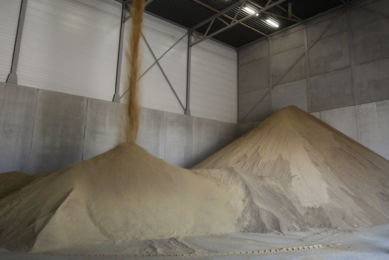Can the US reach 30 p/s/y? – part 2

This is the second in a series of three interviews with industry experts done by Purina Animal Nutrition. In an attempt to discover if the US is capable of reaching 30 piglets per sow per year (p/s/y). This interview is with Steve Huegerich, national director of swine operations for GSC Agribusiness, Coon Rapids, Iowa, USA.
The number of full potential pigs a sow can produce per year is an indicator of a facility’s productivity and throughput power. The figure, demonstrated as pigs per sow per year (p/s/y), is a combination of the genetic progress of a herd, management focus and expertise of the employees, and sow nutrition and care provided through gestation and lactation.
Across the globe, there is large variation in p/s/y levels. Producers in the United States are currently aiming toward the goal of 30 p/s/y, with genetic capabilities of the U.S. swine herd nearing that level.
Nutrition companies in the United States have joined forces to help producers meet genetic capabilities through the Feeding for 30 programme. By means of discussions, forums and shared advice, Purina Animal Nutrition, Zinpro Corporation and DSM Nutritional Products are helping producers to improve sow productivity by increased attention to sow nutrition and management.
Producers involved in the programme that have neared, achieved and maintained this level have done so by perfecting a combination of management factors. We recently sat down with managers of three successful U.S. swine operations to discuss their road to achieving their production goals.
Here, we share experiences and advice from Steve Huegerich.
Q: Tell us a little about your operation and the work that you do.
A: GSC Agribusiness currently operates four sow unites in western Iowa with a total of 8,400 sows farrow-to-finish. My main duties are overseeing the swine operations, including facilities management, genetic selection, health programs, labor, nutrition and marketing.
Q: What goal are you striving to achieve and what are your current production levels?
A: The goal of our operations is sow health and performance. We have one operation with 2,500 sows that is currently at 30.4 p/s/y, a rate that we’ve maintained for the first two quarters in 2013. Our other operations are at 26 p/s/y, ramping back to increased production after a PRRS outbreak, and 27.5 p/s/y. A fourth facility is just beginning its first farrowing.
Q: How have you improved sow productivity in your facility?
A: The biggest thing we’ve done is focus on employees. We try to reward our staff for pigs out the door – and that’s what we get. We hire good people; we train them well and provide incentives for good production. We also have good genetics and partner that with good nutrition.
Q: What role does sow nutrition play in achieving the goal of 30 p/s/y?
A: We feed our sows the best that we can because we need them to stay productive. Our goal is to keep sows in the herd for a considerable amount of time. We pay a lot for our genetics, so we try to get 6 to 9 parities out of our sows if we can, especially for our high-producing sows. Nutrition plays a big role in keeping our sows productive and our parity levels up.
Q: Tell us about your current sow ration.
A: Our goal is to keep the sows eating. In the summer, we ramp up our lactating sow diets by adding fat and we also feed True Appetizer® technology so consumptions don’t drop. In the wintertime, we back off a little bit. We are feeding dried distiller’s grain at 5 percent in lactation and 20 percent in gestation. We’ve also noticed an improvement in performance due to grind size corn. In our sow rations, we keep our grind size at 700 to 750 microns where our finishing diets are between 450 and 500 microns. The larger grind size has helped the health of the sows.
Q: What additional strategies do you implement to keep your sows productive and in the herd long-term?
A: We’ve seen the most results from bump-feeding our sows about a month before farrowing. We kick our feed up two extra pounds per day and that makes a big difference on litter weights. Our born alive is about 13.6 to 13.7, but our birth weights have stayed consistent. The extra feed helps the pigs grow and sets the sows up for lactation. We also creep feed the last five days of lactation with UltraCare First StepM feed. That helps the pigs transition well to the weaning and nursery diets.
The other interviews in this series:
To learn more about the Feeding for 30 programme, visit www.feedingfor30.com











